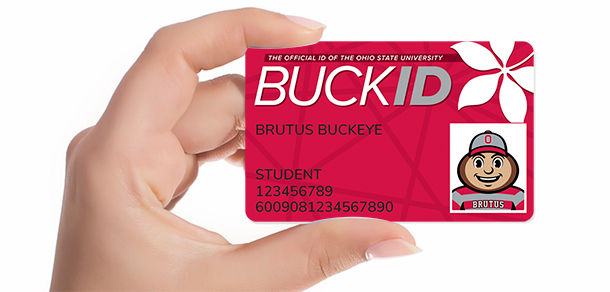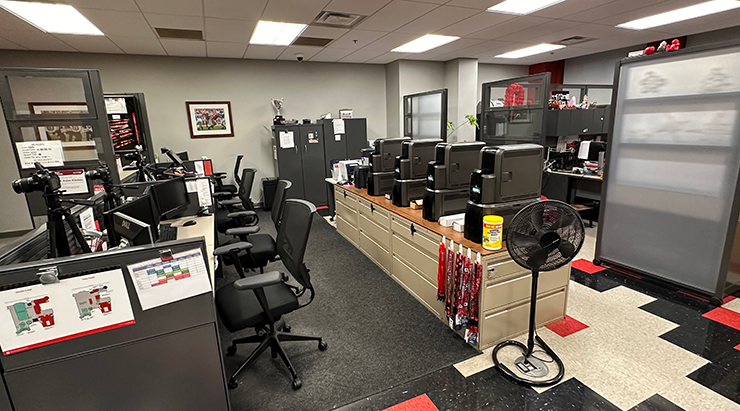
Massive project includes 100,000 IDs and thousands of potential points of acceptance
Ohio State University’s BuckID program began a campuswide transition to include contactless technology in all university ID cards. Starting in summer 2023, all new cards issued included both a mag stripe and a DESFire contactless chip.
“We had been issuing DESFire cards in a limited capacity to certain employees for about two years,” explains Josh Bodnar, director of BuckID. “But this summer was our transition to issuing DESFire cards for all new faculty, staff and students.”
In an article in the Ohio State student newspaper The Lantern, Bodnar cited security as the primary driver for the move.
All new BuckIDs contain both magnetic stripes and contact chips, but existing cardholders who want the contactless card can swap their old card for a $5 fee.
In the past, BuckID cards only included a mag stripe. Mag stripe data is not encrypted or secured in any manner, so it is widely considered inappropriate for secure applications and use cases.
Contactless chips on the other hand make use of encryption, mutual authentication, and a host of security techniques to ensure data on the card is always protected. Where mag stripe cards are easily duplicated, contactless cards cannot be cloned.
In addition to the added security, Bodnar also touts the convenience of contactless.

“Around 18 months ago BuckID began a comprehensive planning process, called BuckID 3.0, to evaluate future directions for our credentials,” says Bodnar. “The first action to come out of that effort was to begin wide-scale deployment of contactless cards to students and employees this year.”
All new BuckIDs contain both magnetic stripes and contact chips, but existing cardholders who want the contactless card can swap their old card for a $5 fee. The replacement fee for a lost card was increased – from $20 to $30 – with the advent of the new card.
The process of upgrading the vast number and variety of card readers across campus is also a massive task.
“The (BuckID 3.0) plan also recommended that departments begin the process of replacing legacy magnetic stripe readers with dual technology readers that support magnetic stripe and NFC (contactless),” explains Bodnar.
Currently, the reader transition process is underway, but there are many locations that may not have contactless capability for months or even years.
The timeline to complete the transition of all card readers and BuckIDs to only use contactless, is not known, but conversations with stakeholders related to costs and timelines are underway.
Today, most exterior residence hall doors, some dining facilities and newer academic buildings are contactless-enabled. That means that on-campus students are using their contactless cards in many ways. For students that don’t live on campus, however, Bodnar says there are not many places ready for them yet.
That situation, however, will change rapidly as new IDs are issued to future incoming classes and existing campus buildings and services deploy the new readers.




